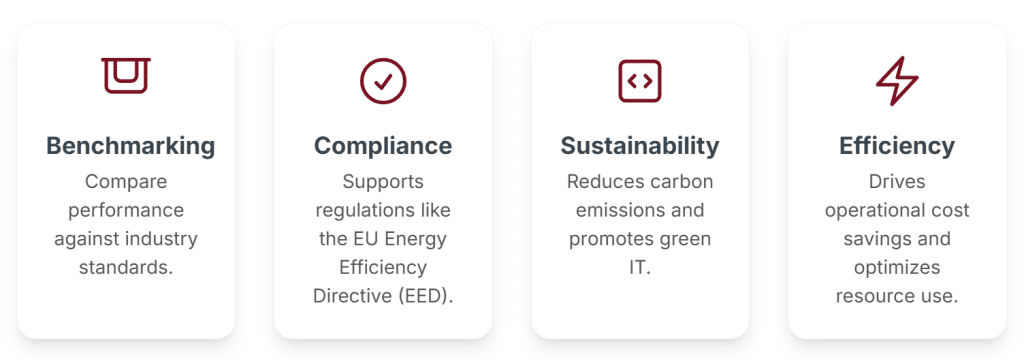Understanding the IT Equipment Energy Efficiency for Servers (ITEEsv) ISO/IEC Standard
Published on August 19, 2024,
by
Understanding ITEEsv: The ISO/IEC Standard for Server Energy Efficiency
Improve Data Center Sustainability with the ITEEsv Metric
The Server Energy Efficiency Standard is becoming a vital benchmark for data centers aiming to reduce energy consumption and meet global sustainability goals. Defined by the ISO/IEC 30134-4 standard and measured through ITEEsv, this metric helps organizations evaluate server performance relative to energy use. Understanding and applying this standard enables IT teams to optimize infrastructure, cut costs, and align with environmental compliance requirements.
What Is the Server Energy Efficiency Standard (ITEEsv)?

ITEEsv stands for IT Equipment Energy Efficiency for Servers. It quantifies the ratio of useful work performed by a server to the energy it consumes, expressed in kilowatt-hours (kWh). This allows data center operators to:
- Benchmark server efficiency
- Identify underperforming equipment
- Optimize energy usage
- Support sustainability reporting
Why the Server Energy Efficiency Standard Matters for Data Centers

With rising energy costs and stricter environmental regulations, ITEEsv provides a reliable framework to:
- Benchmark performance against industry standards
- Support compliance with mandates like the EU Energy Efficiency Directive (EED)
- Promote sustainability by reducing carbon emissions
- Drive operational efficiency through data-driven insights
How to Calculate the Server Energy Efficiency Standard (ITEEsv)

To implement ITEEsv in your data center:
- Collect Energy Data
Measure the power consumption of each server over a defined period. - Measure Workload
Quantify the useful work performed—such as transactions processed or data analyzed. - Apply the Formula
ITEEsv = Useful Work Performed Divided by Energy Consumed (kWh)
- Analyze & Report
Use the results to identify trends, compare against benchmarks, and guide energy optimization strategies.
Reporting Requirements and EU EED Compliance Deadlines for the Server Energy Efficiency Standard

Under ISO/IEC 30134-4:2017, organizations must:
- Document methodologies used for data collection and calculation
- Report regularly, typically quarterly or annually
- Benchmark results against internal goals or industry averages
- Provide actionable insights for continuous improvement
For organizations operating in the EU:
- Annual Reporting: Submit ITEEsv metrics by March 31 each year
- Energy Audits: Conduct every four years, with the next due December 31, 2024
- Verification: Ensure accuracy and completeness of submitted reports
The Bottom Line on the Server Energy Efficiency Standard and Sustainable IT
Adopting the ITEEsv standard empowers data centers to operate more efficiently, comply with global regulations, and contribute to a greener future. It’s not just about compliance—it’s about building smarter, more sustainable IT infrastructure.
Learn More or Get Started
Explore how Nlyte’s solutions can help you implement ITEEsv and enhance your data center’s energy efficiency.
👉 Contact Us
👉 Explore Sustainability Solutions
